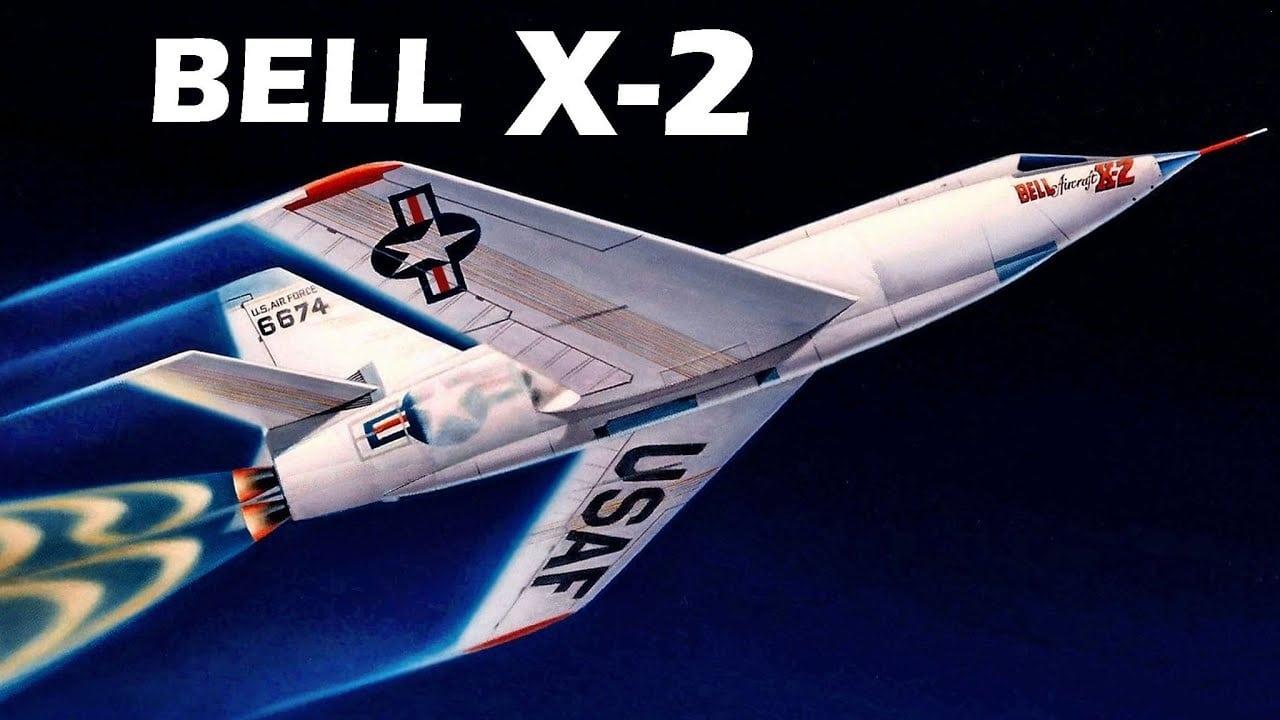The U.S. Air Force during the Cold War rolled out what seems like countless X-Planes to develop the best aircraft on Earth. We asked one of our in-house defense experts and and a former U.S. Air Force officer to explain the significance of the Bell X-2: “So good there had to be a sequel.” That philosophy is one that top-dollar movie moguls live and die by, as is self-evident from the myriad of blockbuster film franchises, from Top Gun to Die Hard to James Bond/Agent 007 to Indiana Jones to Lethal Weapon to Jurassic Park to Friday the 13th to name but a few. But that same philosophy doesn’t just apply to moneymaking film series, but to history-making – dare I say groundbreaking? – aircraft. A prime example of this high-flying (yes, bad puns in back-to-back sentences) sequel mentality is the Bell X-2 research aircraft.
Back-to-Back Machbusters
Long before the Ghostbusters film series, you had the “Machbusters” X-plane series, though admittedly the latter sobriquet hasn’t become a household name or pop culture icon. Be that as it may, the X-plane series has its claim to fame in the annals of aviation history, thanks, especially to the Bell X-1. More specifically, thanks to “Glamorous Glennis,” the plane flown by then-USAF Capt. Chuck Yeager – and named affectionally for his wife – on 14 October 1947 when he became the first human being to break the sound barrier in the Bell X-1.
Even before the flight of the X-1 the R&D folks at Bell Aircraft Corporation – now known as Bell Textron – had already made history during WWII via the P-59 Airacomet, the American jet-powered airplane. Not content to rest on their laurels, the Bell Aircraft leadership decided to build upon their momentum, and thus the X-2 “Starbuster” was born.
The Starbuster did indeed literally live up to its lofty moniker, albeit just barely –more on this a few paragraphs down – and made history in other ways in addition. On September 27, 1956, Capt. Milburn G. “Mel” Apt was at the controls of an X-2 when he became the first human being to fly at Mach 3. To be more precise, Mel Apt actually exceeded Mach 3, attaining an airspeed of Mach 3.196, or 2,094 mph (3,369 kph).
Alas, Capt. Apt’s story has a tragic ending. As per the official NASA factsheet, “Elation was short-lived. For some reason, Apt initiated a sharp turn back toward Edwards. This resulted in a control divergence known as inertial coupling. The X-2 began to tumble uncontrollably. Apt jettisoned the escape capsule, but was unable to extract himself before it struck the ground. Apt’s death cast a shadow over the most spectacular achievement of the program.” The X-2 program would ultimately cost two additional test pilots their lives.
The Sequel’s Prelude and Production
The development of the X-2 actually predates Chuck Yeager’s historic X-1 flight, as it was conceived in 1945 as a joint venture of Bell Aircraft, the U.S. Air Force, and the National Advisory Committee for Aeronautics (NACA; the predecessor of NASA). The prototype was developed to explore aerodynamic problems of supersonic flight and to expand the speed and altitude regimes obtained with the earlier X-1 series of research aircraft. Following in the footsteps of its predecessor – or “prequel” if you want to stick with the cinematic jargon – the X-2 was also powered by rocket engines and was dropped out of a modified B-50 bomber’s bay doors, but unlike the X-1, had much more aerodynamically efficient swept wings rather than the X-1’s straight wings.
The X-2 made its first unpowered glide flight on June 27, 1952, flown by Bell test pilot Jean “Skip” Ziegler. Skip Ziegler would tragically lose his life in an X-2 inflight explosion on May 12, 1953. From there, Lt. Col. Frank K. “Pete” Everest would complete the first powered flight in the craft on November 18, 1955. Unlike the star-crossed Messrs, Apt and Ziegler, Pete Everest would survive all of his X-2 flights and lived to the ripe old age of 84. Yes, dear readers, feel free to throw rotten tomatoes at me for the “star-crossed” phrase, but hey, at least I didn’t throw in a Mt. Everest joke and … oh, never mind!
X-2 pilots still weren’t done making history. On September 7, 1956, then-Capt. Iven C. Kincheloe piloted the airplane to an altitude of 126,200 feet (38, 470 meters) – the highest altitude to which anyone had ever flown. For this spectacular flight, he won the Mackay Trophy and the nickname “America’s No. 1 Spaceman,” thus indeed enabling the “Starbuster” to truly live up to its own nickname. In a tragic twist of fate, Capt. Kincheloe would survive all of his X-2 flights, only to perish whilst flying another infamous widow maker, the F-104 Starfighter.
Where Are They Now?
For my fellow aviation museum buffs, I have some bad news for you. Unlike the X-2’s “prequel” X-1 and “sequels” such as the Mach 6-busting X-15 “space plane,” you cannot find the X-2 on static display at any museum or airfield. You see, only two were ever built, and after those aforementioned tragic accidents, the X-2 program was canceled.
Christian D. Orr is a former Air Force officer, Federal law enforcement officer, and private military contractor (with assignments worked in Iraq, the United Arab Emirates, Kosovo, Japan, Germany, and the Pentagon). Chris holds a B.A. in International Relations from the University of Southern California (USC) and an M.A. in Intelligence Studies (concentration in Terrorism Studies) from American Military University (AMU). He has also been published in The Daily Torch and The Journal of Intelligence and Cyber Security.

